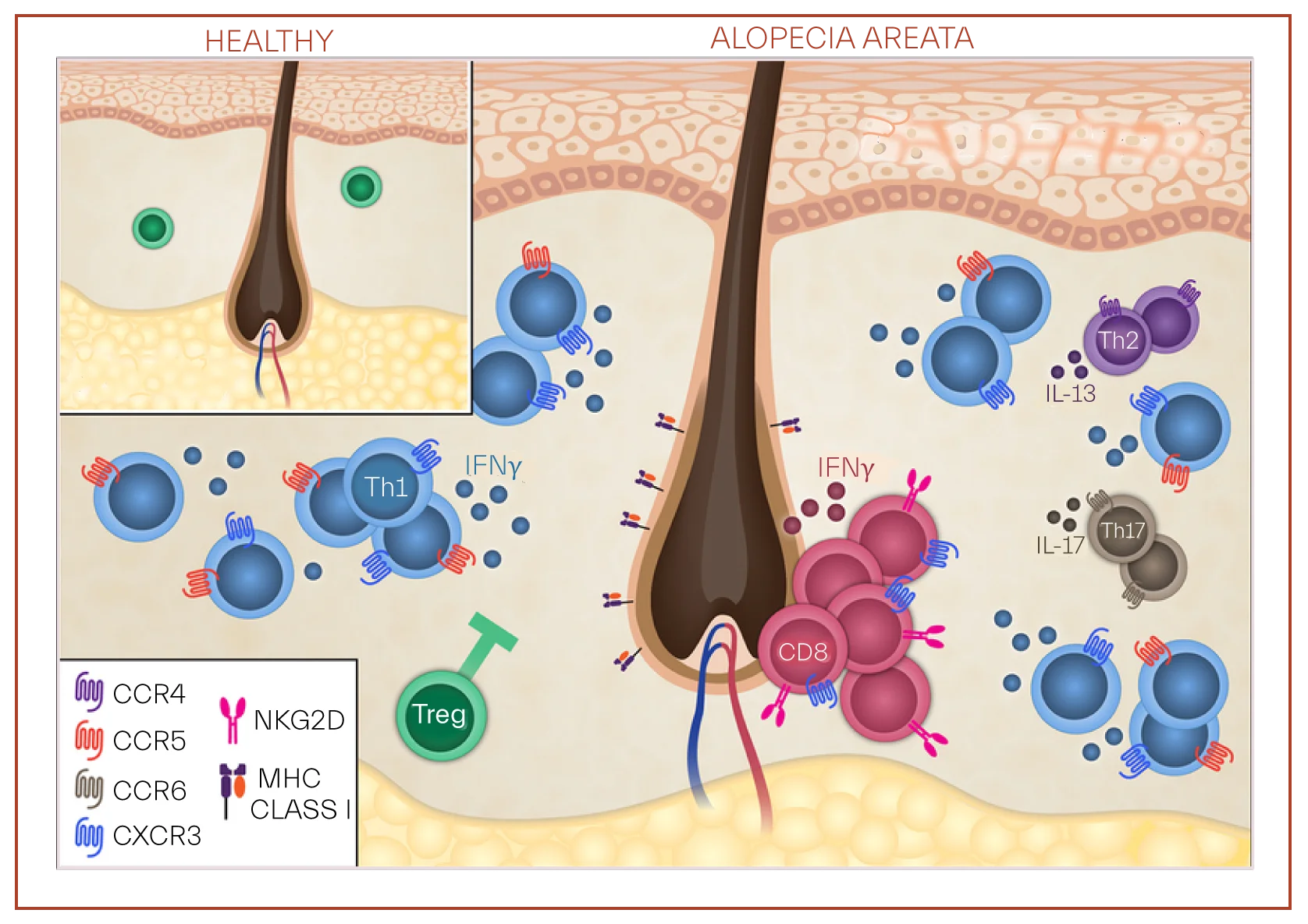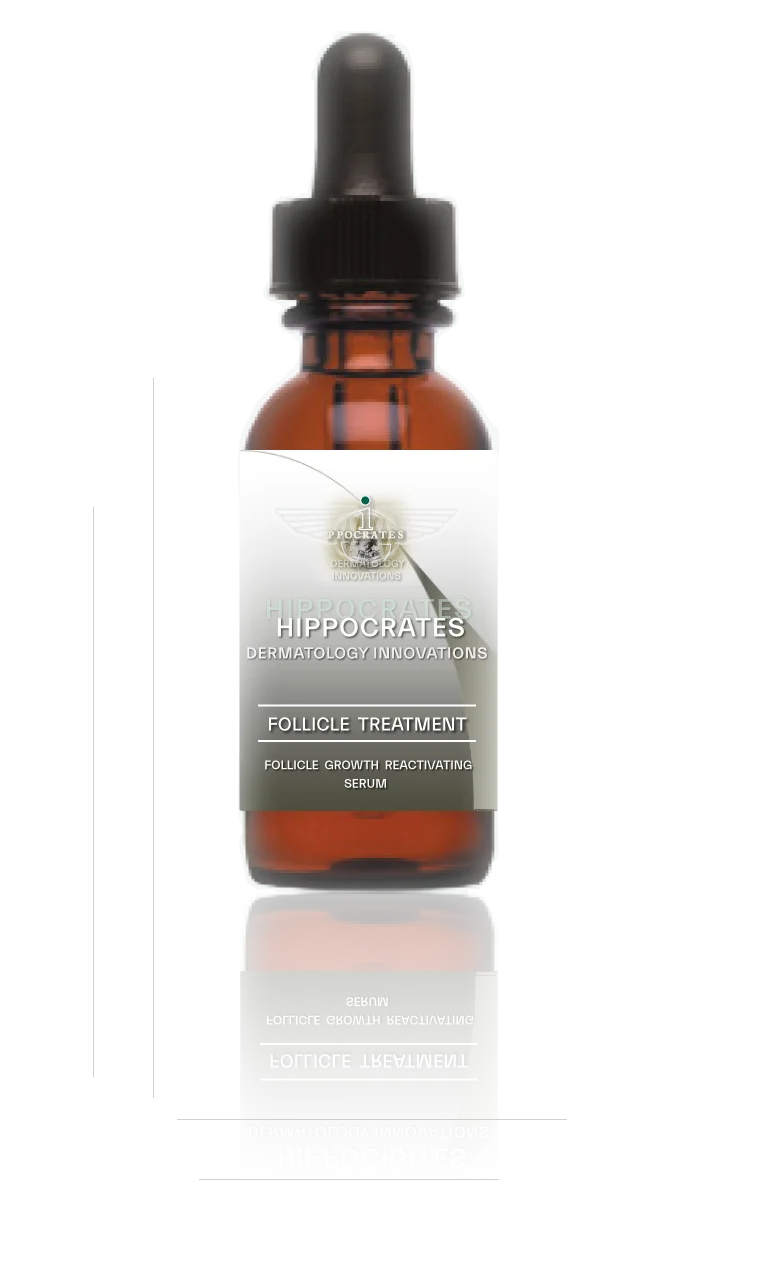Androgenic Alopecia the most common form of male and female hair shedding affects 50% of men by the age 50 and 50% of women by the age 60. Advances in biology of hair loss at molecular level provided better understanding of causes of hair loss and a new approach to its treatment. This approach involves inhibition of 5-alpha reductase, the enzyme which reduces testosterone to its more active form, dihydro testosterone.

Dihydrotestosterone is currently thought to be the most potent androgen affecting the human hair growth cycle, with adverse effects in male pattern hair loss. A recent study suggests role of interleukin-17 in androgenic alopecia and inhibition of this inflammatory maker as a potential treatment for hair loss.
Hair loss in women: Given the protective effect of estrogen and progesterone, there are female hair thinning, which are due to hormonal imbalance and increased DHT level as well. DHT blockers such as Follicle Treatment, an anti aging hair loss serum, enjoying natural ingredients stimulates hair growth by blocking androgen receptors and enzyme 5-alpha reductase, which in turn reduces DHT production in both men and women.
Androgenic alopecia appear to be less severe and less frequent in females due to less expression, about as half, of 5-alpha-reductase and androgen receptors in females compare to males counterpart. In addition, aromatase activity in female hair follicles promotes conversion of testosterone to estradiol rather than DHT.
Blockers of dihydrotestosterone use different mechanisms to reduce dihydrotestosterone, among them are:
Blocking the alpha receptors in the hair follicles
Inhibition of the enzyme 5 alpha reductase, responsible for conversion of testosterone into DHT
Reducing the substances that can produce the enzyme 5 alpha reductase like cholesterol
In susceptible hair follicles, dihydrotestosterone binds to the androgen receptor, and the hormone-receptor complex activates the genes responsible for the gradual transformation of large terminal follicles to miniaturized follicles. Both young women and young men with androgenic alopecia have higher levels of 5-alpha reductase and androgen receptor in frontal hair follicles compared to occipital follicles. At the same time, young women have much higher levels of cytochrome p-450 aromatase in frontal follicles than men who have minimal aromatase, and women have even higher aromatase levels in occipital follicles.

One study suggests increased expression of CD4 cells, CCR6+ CD4 cells, which are essential for CD8 cells priming, in alopecia areata patients to provide rationale for role of atopy in the pathology of the disease. A 48-week double blind multi-center study on efficacy of dupilumab, further delivered results indicating 30% improvement in SALT score, substantianting role of atopy in pathogenesis of alopecia areata. Dupilumab is a monoclonal antibody which binds alpha subunit of IL-4.
Follicle Treatment, our anti aging hair loss serum, a natural DHT blocker is an anti aging solution to male and female pattern hair loss. This anti aging hair loss product is based on latest medical research on causes of hair loss in women and men. It is now known that dihydrotestosterone (DHT), a by-product of testosterone, is the detrimental agent that may be a hair loss cause. Simply put, under certain conditions DHT “strangles” hair follicles>
Most recent hair loss research has proven that DHT is responsible for the progressive shrinking of the hair follicle. While this process is the primary cause of hair loss in women, there are several other factors that contribute to further deterioration of the hair follicle.
Oxidative stress, reactive oxygen species and free radical generation may account for hair thinning and loss to a significant degree. Nutrient deficient hair follicles, poor circulation of the scalp, over active sebaceous glands, and clogged or harshly treated hair follicles are among these factors.
Growth factors contribute to transition from follicular stem cells to hair follicle cells by supporting angiogenesis and making provisions to cells depleted in oxygen and nutrients through stress and aging, promoting telogen to anagen phase switch within hair follicles. Among a plethora of growth factos, IGF-1, insulin-like growth factor-1, TGF-β, transforming growth factor-beta, EGF, epithelial growth factor, PDGF, platelet-derived growth factor, VEGF, vascular endothelial growth factor have been more researched and more data is available on their profiles.
While growth factors are implicated in cell signaling and cell proliferation, they also exert an anti inflammatory perfomance by releasing IL-1 antagonist receptor, sTNF, soluble TNF receptor, IL-4, IL-10 and IL-13, which is another aspect of cascade of events imparting to hair loss.
